
Everything you need to know about restaurant social media marketing

It’s no secret that social media is a great tool for marketing your restaurant—45 percent of diners in the U.S. say they have tried a restaurant for the first time because of a social media post. Restaurant social media marketing—like sharing your popular dishes, daily offers, or even upcoming events—keeps your menu and restaurant top-of-mind, and is an excellent way to promote your business without overtly advertising.
If building your restaurant social media marketing strategy feels somewhat intimidating, don’t fret—we’re here to help! Whether you’re not sure what to post, or have trouble making time to keep up across social platforms, this ultimate guide covers the basics, steps, and do's and don'ts of social media marketing.
Let's get started.
Why Is Social Media Marketing So Important for Restaurants?
No matter how you feel about social media, there's no denying the enormous role it now plays in influencing consumer behavior and shaping the ways that customers interact with brands.
One 2016 study from Sprout Social found that 88 percent of people are influenced by online reviews and comments, and 75 percent of people had purchased a product because they saw it on social media. And that was five years ago.
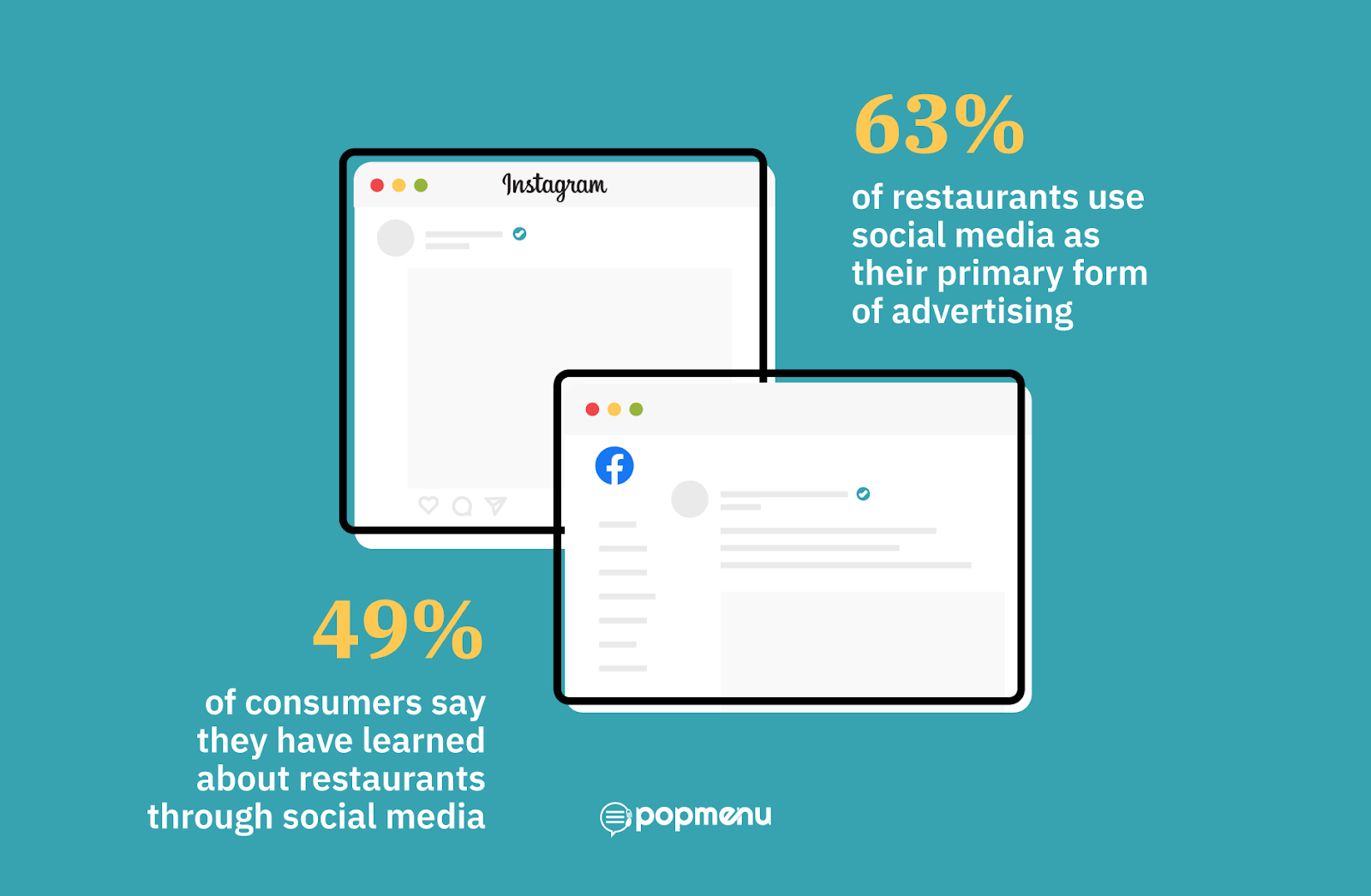
Today, 63 percent of restaurants use social media as their primary form of advertising. And that means they're really meeting guests where they are—49 percent of consumers say they have learned about restaurants in their community through social media.
Using Social Media Marketing to Promote Your Restaurant
With those statistics in mind, it's easy to see why social networks are a great place to promote your restaurant. Here are some common ways restaurants use social media marketing.
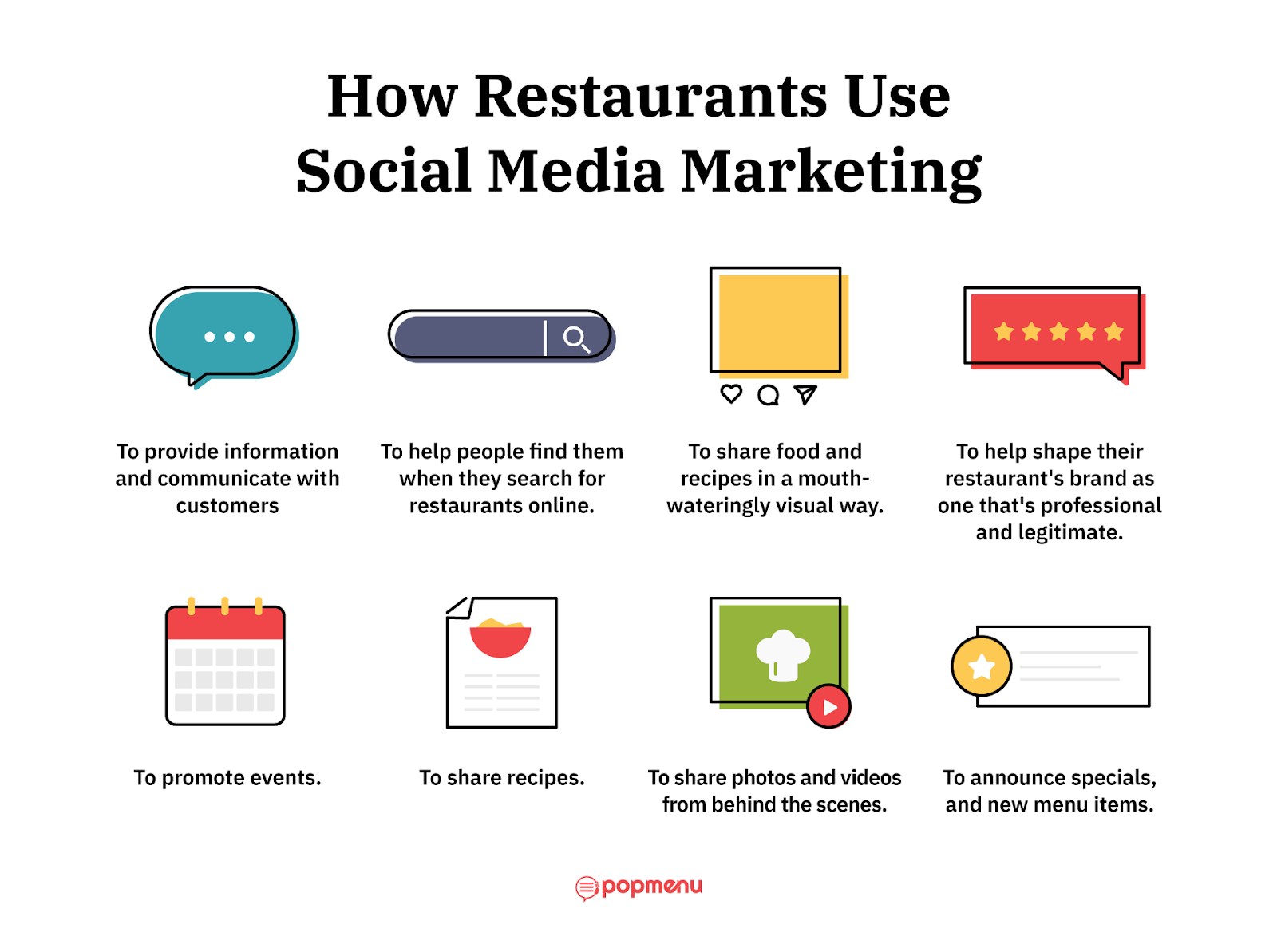
How Restaurants Use Social Media Marketing
- To provide information and communicate with customers (and potential customers).
- To help people find them when they search for restaurants online.
- To share food and recipes in a mouth-wateringly visual way.
- To announce seasonal, daily, and weekly menus, new specials, and new menu items.
- To promote events.
- To share recipes.
- To share photos and videos from behind the scenes.
- To help shape their restaurant's brand as one that's professional and legitimate.
Getting Started With Restaurant Social Media Marketing
There are a few steps you need to take before you can hit "post" on your first photo or status update. Here's a step-by-step guide to getting started with restaurant social media marketing.
Step 1: Fill Out All Relevant Platforms
49 percent of people use Facebook to search for local restaurants. Instagram is the top social media platform for engagement between restaurants and their guests. Google My Business can help boost your restaurant's SEO.
In other words, different platforms offer different benefits, and it's important for your restaurant to be on all of them.
Additionally, all those profiles should be completely filled out, complete with photos (and multiple locations, if your restaurant has them). One important thing to keep in mind as you're filling out social media accounts is to customize the URL of each social profile to be your restaurant's name—this will help your social media appear in searches for your restaurant.
Step 2: Create a Brand Voice
An important part of having an effective social media presence as a business is developing a brand voice. This is the tone you'll use when making all your social media posts.
Having a consistent tone in all your social media posts helps create brand awareness—that is, it helps make your restaurant stand out and become more recognizable online. Your restaurant's online presence is an important part of your overall brand and marketing plan.
This can be tongue-in-cheek and funny (think Wendy's and Taco Bell on Twitter), or it can be straight-forward and more serious. It can be influenced by the type of restaurant you own or manage, as well as the vibe of your restaurant. A casual, family-friendly spot can have fun with its social media presence, while a white-tablecloth, fine-dining restaurant might want to keep things serious, straight-forward, and informative online.
Step 3: Explore Paid Social Advertising Options
One of the great powers of social media is how easy it is to purchase affordable ads on just about any platform. Social media sites like Facebook have a ton of data about their users, which means you can target different locations and demographics with Facebook ads for your restaurant—ensuring that they get seen by the right people who make up your restaurant's customer base.
Step 4: Be Consistent and Iterate
The last step is simple: Just keep posting! Your guests will appreciate regular posts from your restaurant—and posting on a regular basis is one of the factors that social media algorithms consider, so it can help more people see your posts.
As you try different types of posts and different platforms, pay attention to what works—watch how many guests interact with your posts, for example, and see if you can spot any patterns that tell you the types of posts that get the most engagement. Continue to iterate on your social media marketing strategy to gain more followers and more engagement.
Restaurant Social Media Marketing: 13 Do's and Don'ts
Now you're ready to begin your social media marketing journey. As you set up your profiles and create your first post, keep these do's and don'ts in mind—they'll help you see the most social media success.
Setting Up Your Restaurant Social Media Marketing
Do: Add crucial information to your restaurant’s social media profiles

All the main social media platforms (Facebook, Instagram, Twitter) allow you to link to your restaurant’s website in the profile bio, alongside contact information like your email address and phone number. On Facebook, you can also provide restaurant hours, link a ‘book now’ button for guests to make reservations, and manage a reviews page. The point is—the more information you can provide to your guests, the more likely they are to choose your restaurant for their next meal.
Don't: Post menus as photos or PDFs
Your menu is the most important part of the guest journey—so make sure when you’re highlighting food items, they are clear and easy to read. Consumers can be impatient, and a PDF or JPG of a menu can be difficult to read and may drive customers away from your restaurant and your social page.
PopTip: Make sure guests can easily access your website from your social page and that your menu is easy to find and easy to read online—especially when viewing on a mobile device. Bonus points if your menu has photos and reviews under each dish!
Do: Set up a business profile
Using a business account (vs a personal one) will instantly boost your restaurant social media marketing capabilities. Many of the important tracking tools are only available through a business page, so setting up a business profile is crucial for seeing the impact your posts have made.
Making Your First Restaurant Social Media Posts
Do: Give behind-the-scenes looks from your restaurant
Some of the content social media users love to see from restaurants comes from behind-the-scenes. Things like employee spotlights, recipes, a glimpse at the inner workings of the kitchen—even vendor spotlight—can be popular content that guests engage with.
Don't: Overwhelm guests with too much promotion
There's a fine line between using social media in a way that naturally promotes your restaurant, and using it in a way that's overtly advertorial. Being too in-your-face about promoting your restaurant can actually be a turn-off for guests. Instead, try to be authentic. Share things that your guests can be excited about, and engage them in conversation. It will likely be more effective than just ads.
Re-wording captions to avoid call-to-actions, posting about customers, or just showing off delicious food are simple ways to engage with guests. A good posting cadence usually has a 4:1 ratio of “fun, family, friends” posts to advertising posts.
Do: Start conversations
Starting conversations online is a surefire way to increase engagement with your restaurant's social media profiles. Some ideas for good conversation starters:
- Ask questions.
- Ask for guests' opinions.
- Repost user-generated content, like photos that guests posted while visiting your restaurant.
- Host social media contests (for example, a gift card raffle or giveaway).
- Participate in trending hashtags and other popular topics.
Managing Your Restaurant's Social Media Profiles
Do: Schedule your posts
An important part of social media management is planning ahead.
An increase from zero posts, to 2-3 posts a week is likely to get you on guests' social feeds, and help drive them through your door. The best way to get started is to plan ahead. Set time aside once or twice a week to ideate—great posts can be anything from featured weekly specials or mouthwatering photos of fan favorites, to customer appreciation posts. Get creative and don’t be afraid to try something new!
Don't: Silo your social media efforts
You should have a cohesive strategy that encompasses all your social media channels. For example, a post on your facebook page should be adapted into a series of tweets and an Instagram post, so guests across platforms can see all your content.
Do: Respond to reviews
Many social media sites include reviews on business pages (and then there are review sites like Yelp and Tripadvisor, where you should also have a profile set up). It's important to respond to reviews guests leave for your restaurant, whether they're good or bad. Responding to a bad restaurant review can be tricky, but it's necessary in a world where the majority of consumers research restaurants online and read reviews before going out to eat.
Finding Content Ideas for Restaurant Social Media Marketing
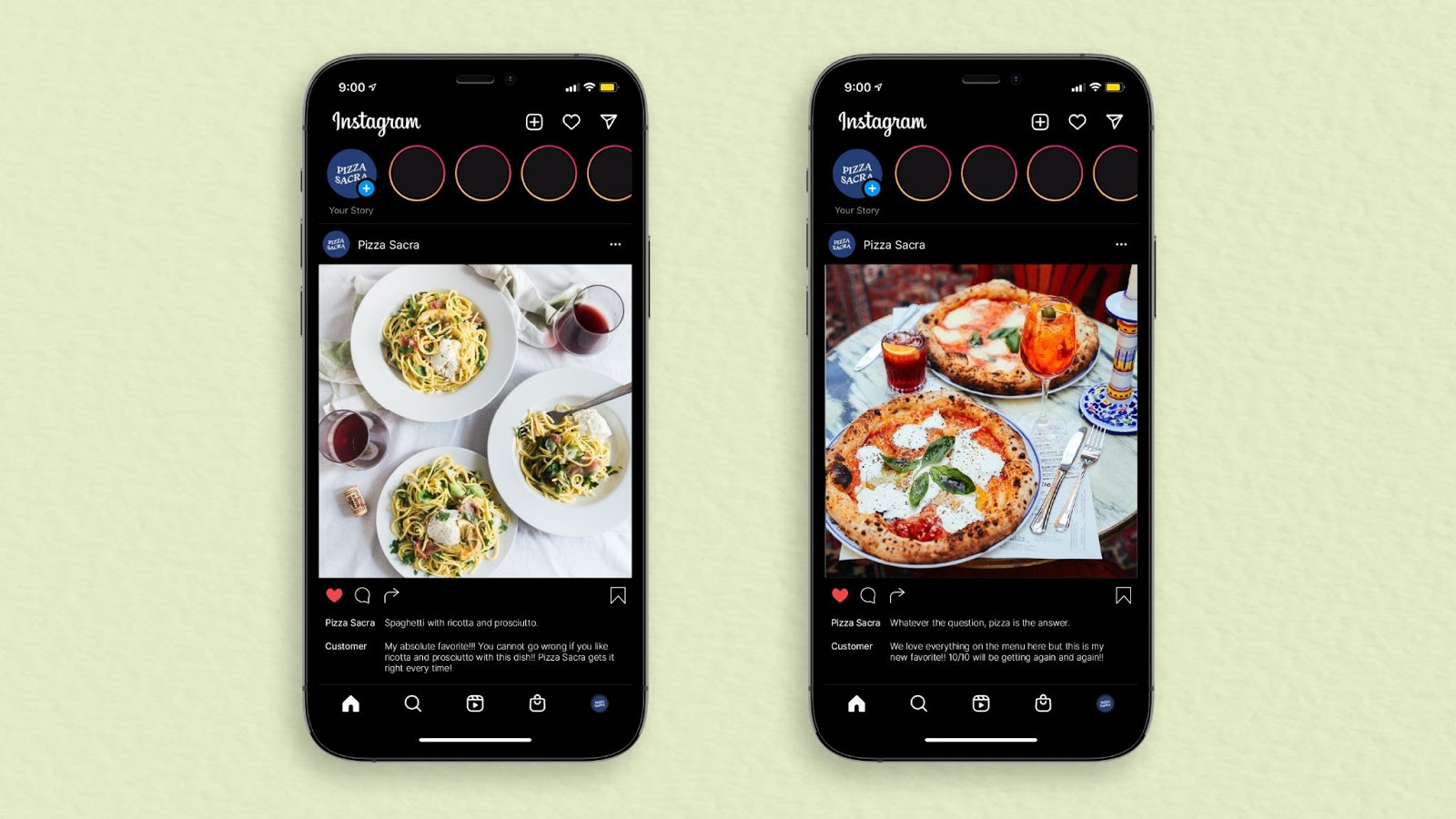
Do: Look to others for ideas
It can be difficult to constantly come up with new ideas for social posting, so looking at what others are doing can be a great way to come up with inspiration. Whether you’re sneaking a peek at a competitor, admiring one of your personal favorite restaurants, or checking out a business outside the restaurant industry, good ideas can come from anywhere!
A great strategy is to collaborate with others on social media—like another local business or even a social media influencer. This can help expand your audience and get your restaurant discovered by more users.
Don't: Post low-quality photos
High-quality content is what will keep people engaged. Remember, part of what makes restaurant social media marketing so powerful is the ability to easily share posts. Platforms like Twitter and Facebook make sharing easy, but usually guests share, post, and comment on content that they’re willing to put their name on or associate themselves with—and no one is particularly excited to put their name on a low resolution photo.
Beautiful photos, on the other hand, engage more guests—and put your food in the best possible light.
PopTip: Invest in professional photography to ensure your food is always crave-able.
Do: Post a variety of content
Visual content is always king when it comes to restaurant social media marketing. Using photos and native video (and even live video) will not only attract more engagements, but social platforms will boost the posts more because visual content is more relevant to social media users.
Pay attention to new features released by social platforms as well. Some recent examples would be Twitter introducing fleets or Instagram introducing reels. Social media companies spend lots of time investing in new features and want these features to be used, so they are more likely to boost content that uses new features to help drive broader feature adoption. Incorporating new tools into the variety of content you post is a sure way to get in front of more guests.
Do: Use Popmenu for your Restaurant Social Media Marketing
Popmenu is the marketing technology tool built for restaurants. Our included social media marketing tools make it easy to plan your social media strategy and other digital marketing plans—so you can stay top-of-mind with guests.
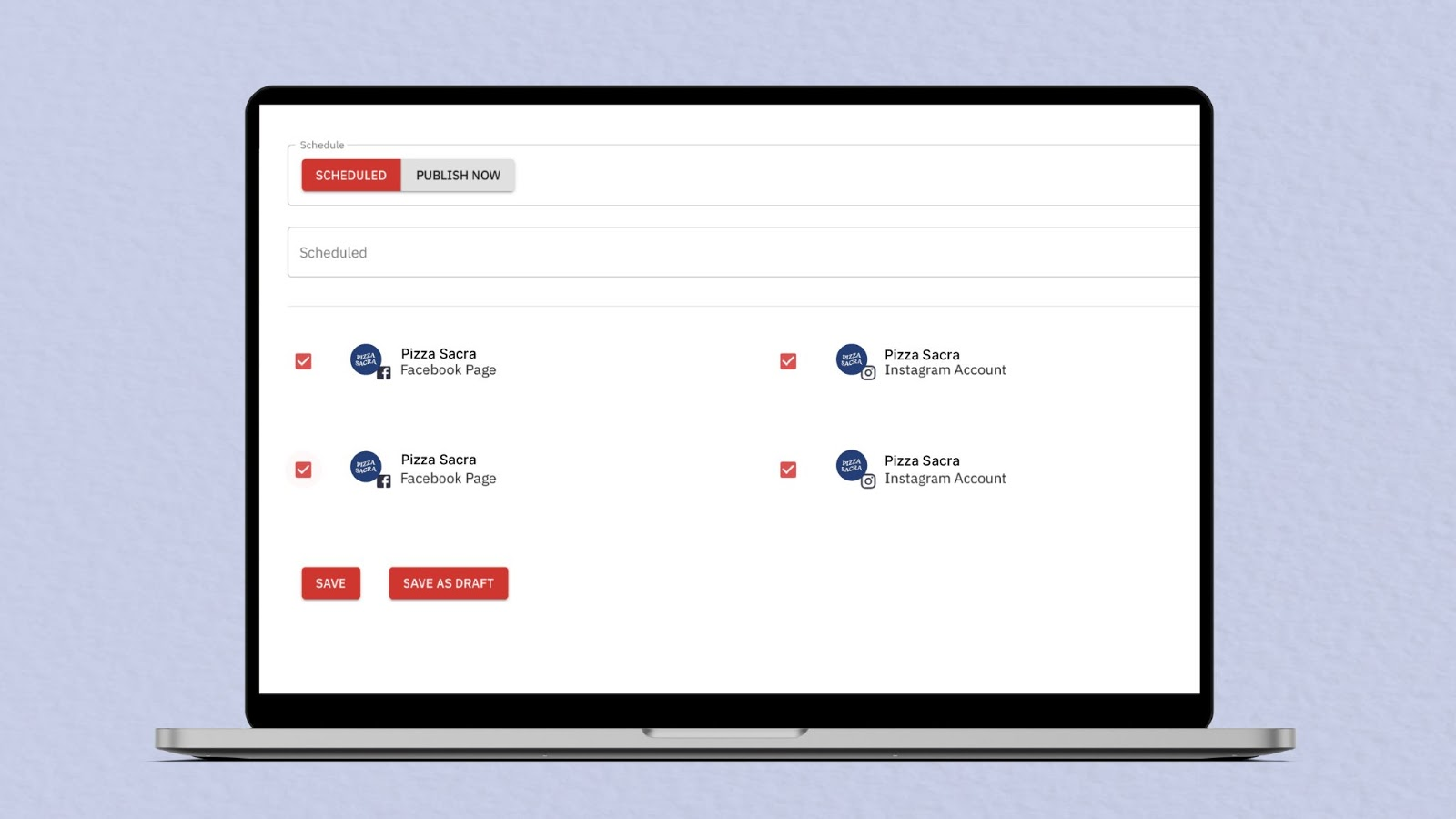
Popmenu lets you connect directly to your restaurant's Facebook, Instagram, Twitter and Google My Business accounts—so you can design, plan, publish or schedule posts directly from the Popmenu platform. Want to learn more? Connect with our team!
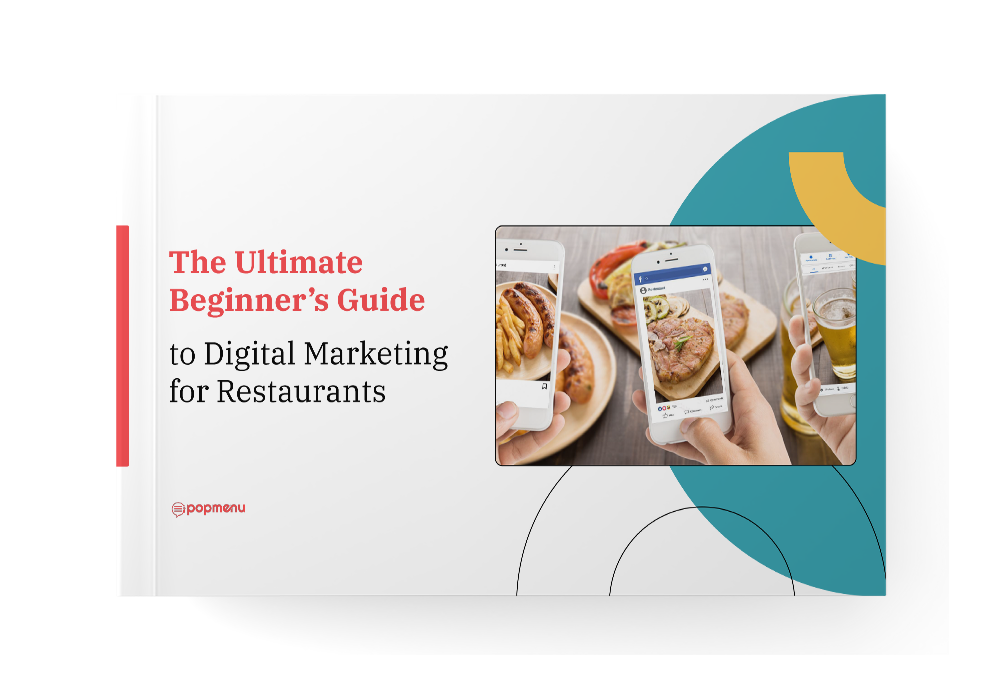



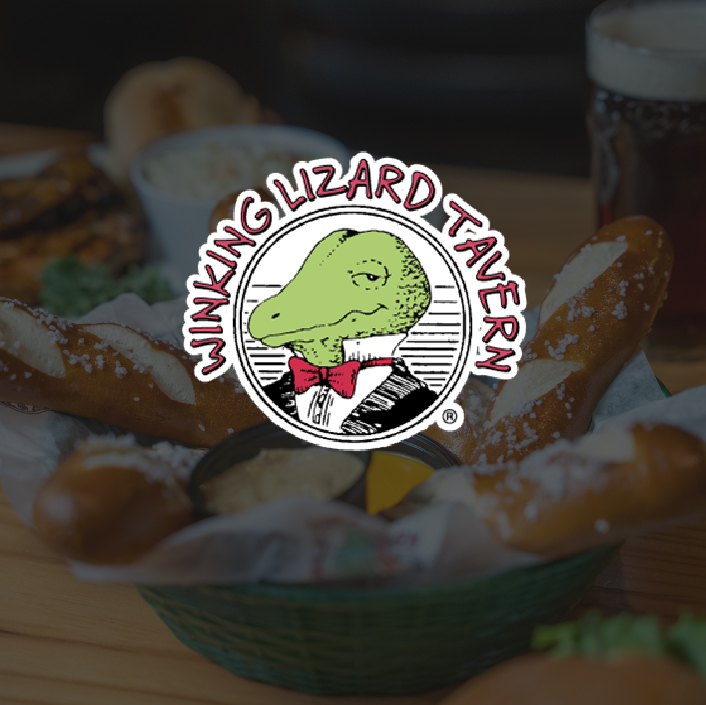
.jpeg)






